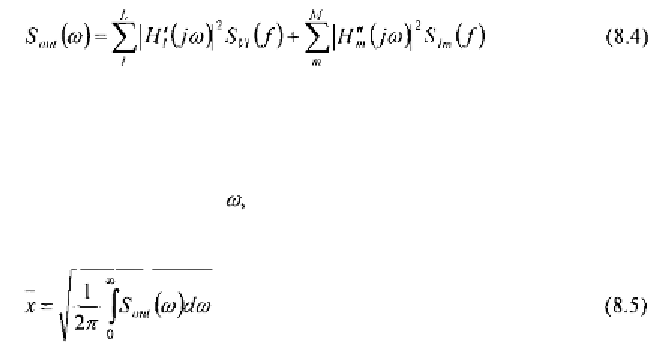Environmental Engineering Reference
In-Depth Information
In contrast, when we have different uncorrelated
1
noise sources, the
output noise is calculated as the root of the sum of the mean square values of
each component. To better illustrate this concept, let us consider a generic
network containing
L
noise voltage sources and
M
noise current sources.
Here the total PSD of the output noise,
is
where and are the magnitudes of the voltage and current
transfer functions respectively from the noise voltage and current sources to
the specified output variable. Note that since these transfer functions depend
on the angular frequency,
the total PSD of the output noise in (8.4) is also
function of
Using (8.3) we can express the total output rms noise as
where division by
is made necessary by the change in the integration
variable from
f
to
8.2 EQUIVALENT INPUT NOISE GENERATORS
Consider the noisy two-port linear network in Fig. 8.la. In order to
compare the noise generated by the network to the incoming signal (and to
its associated noise) we define equivalent input-referred noise generators.
These generators, when applied to the
same
network, but considered
noiseless (i.e., without internal noise sources) will produce the
same
output
noise. Specifically, we need one voltage generator in series with the input, a
current generator in parallel with the input, and a correlation coefficient
which can have any value between -1 and +1. The latter takes into account
the presence of common phenomena that contributes to both the two
generators. As stated in note 1 of this chapter, this correlation can be usually
1
Two noise quantities are said to be uncorrelated if they are produced independently
and there is no relationship between their instantaneous values. Under a wide variety
of actual situations (including active devices and operational amplifiers) the
correlation between the different noise sources is zero or can be neglected.








